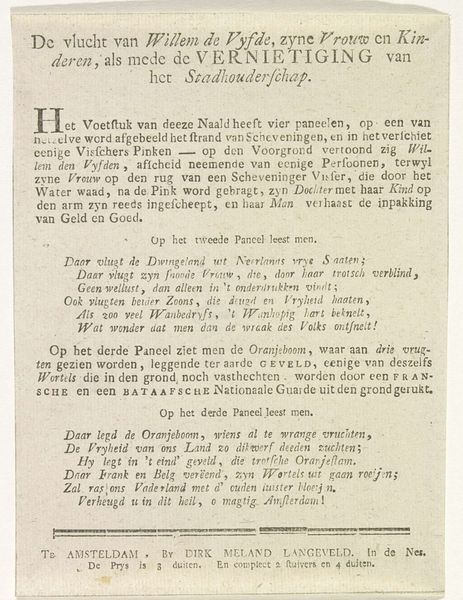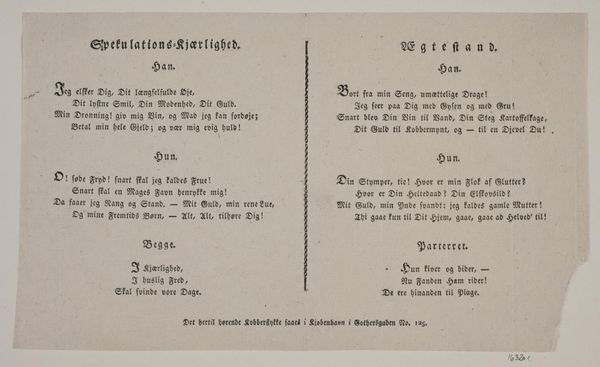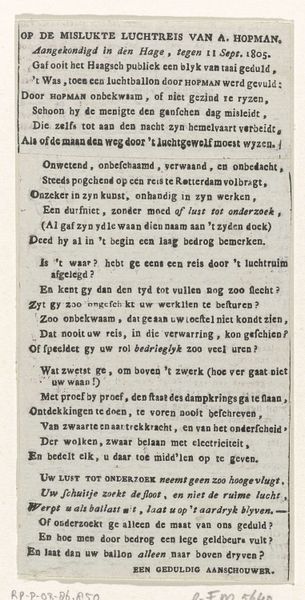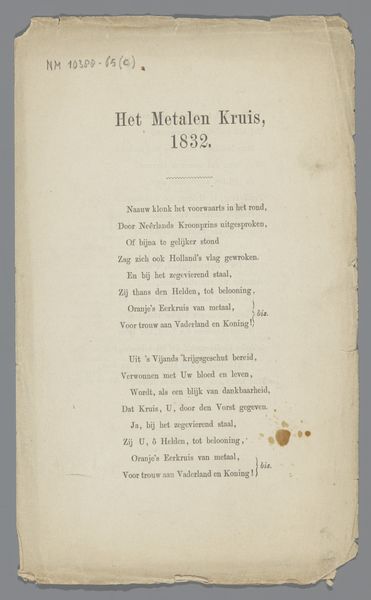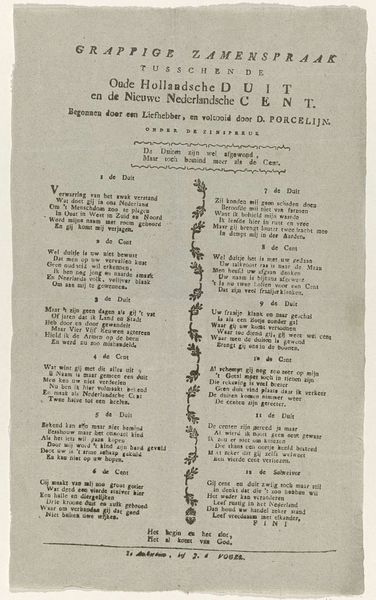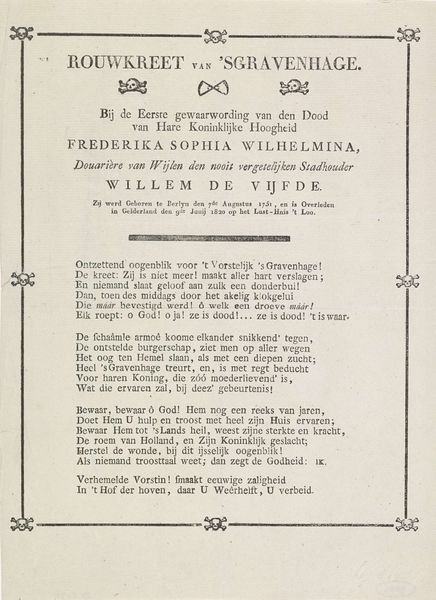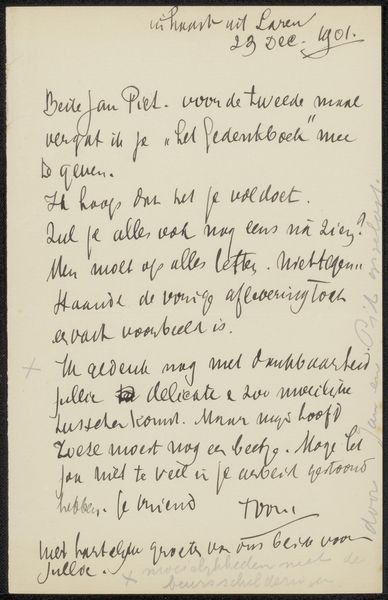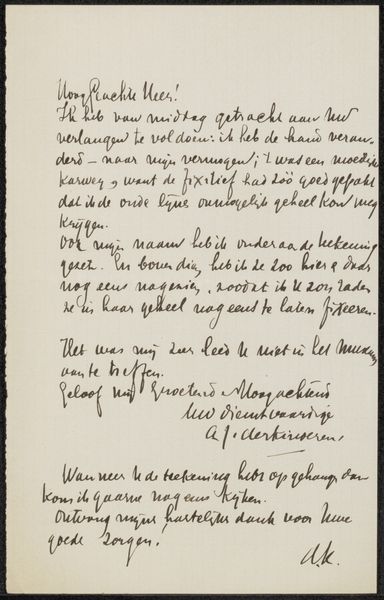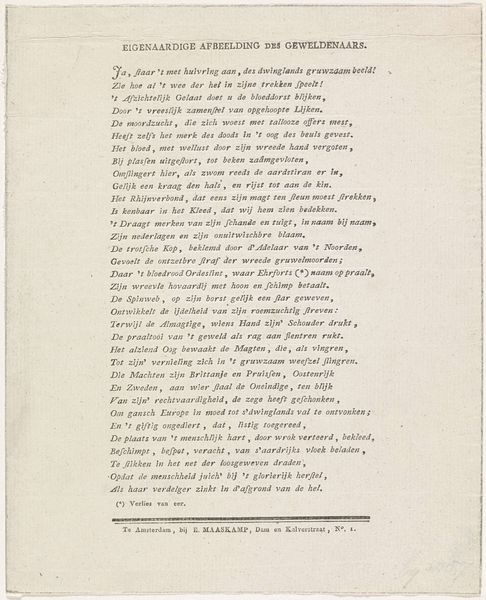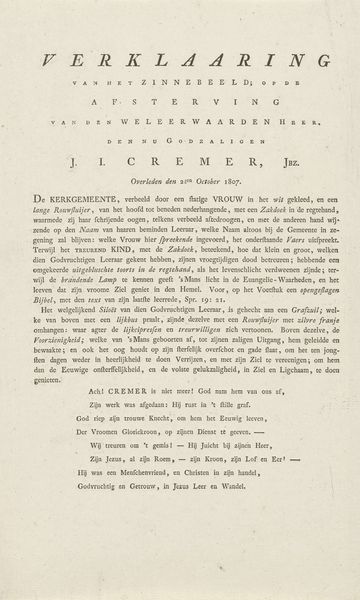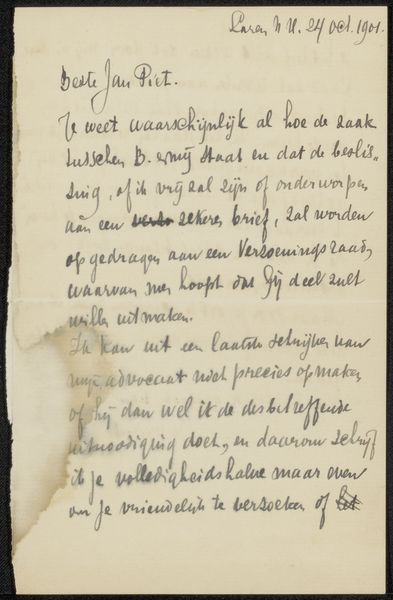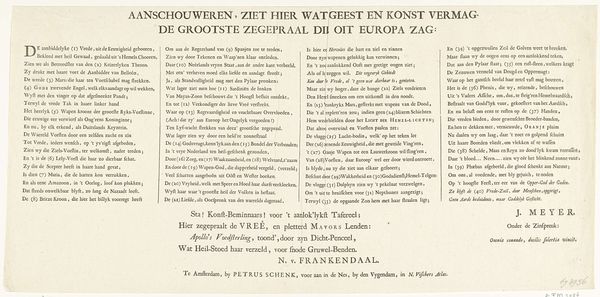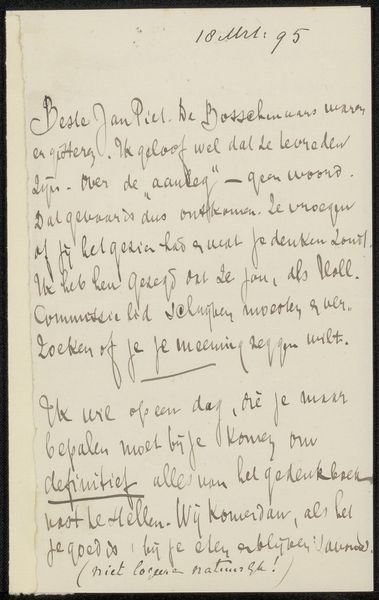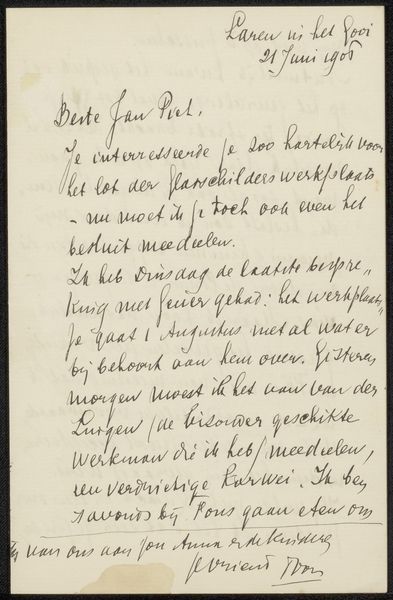
print, textile, paper
#
neoclacissism
#
narrative-art
# print
#
textile
#
paper
#
romanticism
#
history-painting
Dimensions: height 207 mm, width 155 mm
Copyright: Rijks Museum: Open Domain
Curator: Let's take a look at “Balans van Europa,” or "Balance of Europe," created in 1814 by Derk Anthony van de Wart. It's a printed piece, likely on paper, perhaps even a textile print given the date. What strikes you first? Editor: The immediate impression is austerity. The stark contrast of the typography on the aged paper points toward something… deliberate and carefully produced. The lack of embellishment also contributes. What about the technique, what kind of labor did it involve to make it? Curator: The technology of print at the time suggests a relatively replicable and therefore accessible medium, though its visual design, echoing Neoclassical ideals, aims for timelessness. The text certainly isn't neutral. Do you perceive specific cultural symbols at play here? Editor: Absolutely. I note a strong sense of restoration—a return to order. The idea of "balance" points towards anxieties of material disruption in early industrializing Europe, even the implied balance sheet as an accounting metaphor looms over the continent at that historical moment. Curator: The piece speaks of Europe weighed down by France and then restored by divine intervention—note that even God is a sort of mechanic, "setting" things into order after a lightning strike! I find interesting how the narrative reflects a period grappling with immense geopolitical shifts—the print, in its textual and formal composition attempts to create something solid. What do you think about it now? Editor: Having considered both its form and historical place, what appears stark takes on even deeper layers of resonance with specific class aspirations, the relationship between spiritual symbolism and geopolitical machinations that reveal what it took to craft this kind of print, to maintain cultural and political power. It is like seeing power itself through this small little textile piece. Curator: Precisely. “Balans van Europa” presents, as you’ve suggested, an illusion of a world neatly arranged and justified, though that very articulation betrays the immense forces shaping its creation. Editor: An assertion of balance and cultural control expressed on an everyday accessible medium opens to a reexamination of power.
Comments
No comments
Be the first to comment and join the conversation on the ultimate creative platform.
